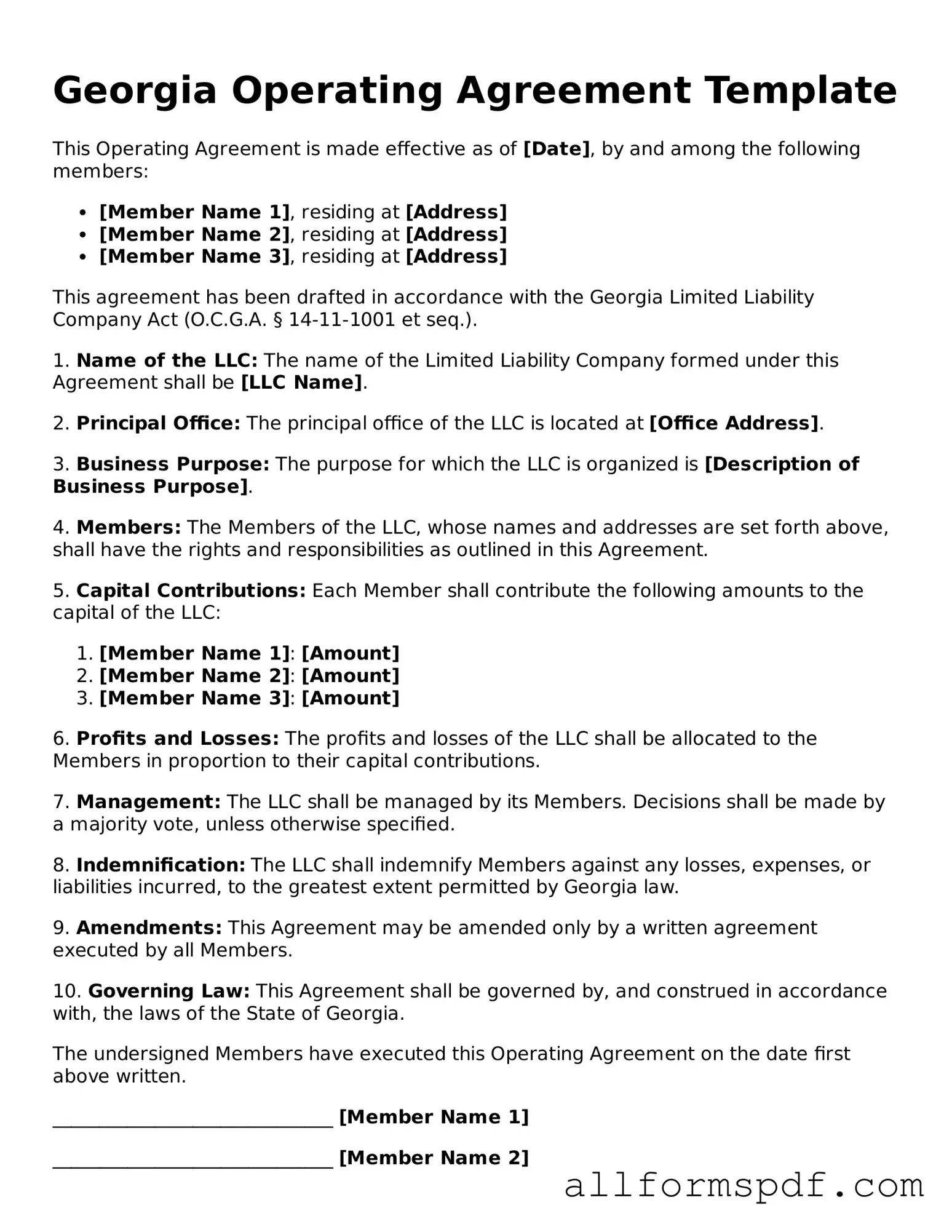Fillable Operating Agreement Form for Georgia
The Georgia Operating Agreement form is a crucial document for limited liability companies (LLCs) operating in the state. This agreement outlines the internal management structure, responsibilities, and operational procedures of the company, ensuring clarity among members. By establishing these guidelines, the form helps to protect the interests of all parties involved and promotes smooth business operations.
Create My Operating Agreement Now
